Top 5 underrated coastal cities in Asia
Coastal cities boast a blend of both hustle, bustle and relaxation, something which is a perfect combination for many. Read on to find out more.

Top 5 underrated coastal cities in Asia
We all love escaping the city and retreating somewhere with a little more tranquillity, but why do we keep going back to our lives in the city after if we thirst for breaks away from it? Is it our need to fulfil set career goals or could it be that there is a pull to the hustle and bustle of city life which we love. Personally, I believe short doses of that hustling bustling city life is great but I feel like its best when coupled with the opportunity to escape to big open spaces upon a whim. This is a concoction which coastal cities proudly serve, thus attracting many holiday makers and expats.

Some of us are lucky enough to live in coastal cities around the world like New Orleans, Louisiana (nick named “The Big Easy”), Bangkok, Thailand with its winding canals floating markets or even Sydney Australia with it’s 70 somewhat beaches! But according to current travel trends many tourists have a thirst for the lesser explored, a travel delicacy which understandably is becoming increasingly hard to find.

Therefore, this post is going to detail 5 lesser-known coastal cities in Asia, which have not yet received the international attention they deserve. The first three destinations on our list come from my personal experiences, the final two of the five come my research and interviews with both a local expert and a fellow traveller, read on to get inspired!
Xiamen, Fujian province, China
Xiamen is a Chinese coastal city home to 3,791,000 people across 1,701 km², pre-covid they were boasting a 14% increase in tourism year on year, around 3% higher when compared to the China’s national average (11%). Xiamen is just west of Taiwan as shown via our trip planner screen capture below.
This coastal city took my breath away. It’s architecture felt like home, probably because there was a British Concession in Xiamen; Amoy Bund from 1852 to 1930.

Where to stay?
Xiamen’s Curio Collection by Hilton is a good choice. Breakfast, pool, gym, location, all top notch! If you can build up a good score you can get discounted tickets on your stay. I’d recommend using the APP Feizhu to do this (translates to flying pig which I love) whenever possible, during my trip the cost of a 5-star room at this Hilton hotel variety was cut from $300 a night to $115. If you’ve not used the App before you should start! Split that with your travel companion/s and your laughing. Email me if your having any problems with set-up via blog@tripapt.com, we’ll try and help you get a similar deal.
What to do?
Aside from the golden cost which is best explored on bike saddle it has to be the stunning island Kulangsu. Just WOW! Take a look at the pictures below yourself!

The British were the first International country to build an embassy here in the late nineteenth century. I went to have a look at the building and a plaque outside detailed how the Brits chose this spot to build their embassy due to the sheer beauty of the region. The streets are scattered with western blends of architecture infused just perfectly with China’s local touch to make it the most bespoke retreat I’ve ever had.

You can see a couple wearing traditional 1960’s formal clothing on the rooftop, probably modelling for a brand or perhaps joining the many whom take wedding photos on this island.

Above you can see a blend how east delicately meets west in this architectural form. The small balconies remind me of France or Italy both of whom were settled too on the island by 1902.
Local life comparison to London and Shanghai:
It was my second day in Xiamen where I made my first local friend there, his name was Charles. Charles worked as a security guard outside a mall in a small police box outside the Conrad hotel in Xiamen. I was parking my rental bike when he stopped me to ask if I like Xiamen, in perfect English! Clearly responding with “yes!” he went on to describe how Xiamen is much slower than life in Shanghai. I agreed and asked how his English is so good, apparently for the last 9 years conversations like these with passing internationals has lead to his improved English! Amazing.
In regards to London, I feel as though Xiamen has everything London needs. Hot weather, clean air and a slow pace. I do love London for it’s charm and hardworking attitude but my goodness is it nice to have a slow pace once in a while. The city feels like it’s stuck in time, everything just falls into place naturally. This attitude reverberates through the town planning department as seen below where you can see this 200 year old tree left in place after it fell during a 2016 typhoon; since supported accordingly.

A small note on inconveniences to add some realism to this wanderlust is to follow. Since a few years ago Internationals need to book their trip to the Kulangu Island 24 hours in advance via the app Dianping (costing about $4 but including a boat return journey). If you fail to do so you can book it through a local travel agent as little as 30 minutes in advance for $23. The name of the company you can use is called “Xiamen Quwan”(厦门趣玩). Here is a picture of one of the offices I used on my trip.

Sanya, Hainan province, China
Sanya is situated in Hainan province China, the city has a population of 644,700 across 153 km2. Pre-covid Sanya boasted a 39.3% year on year increase in tourism revenue. Locally dubbed the Hawaii of China, Sanya is next to the South China Sea just east of Vietnam, thus enjoying the tropical benefits of otherworldly fruit and weather.
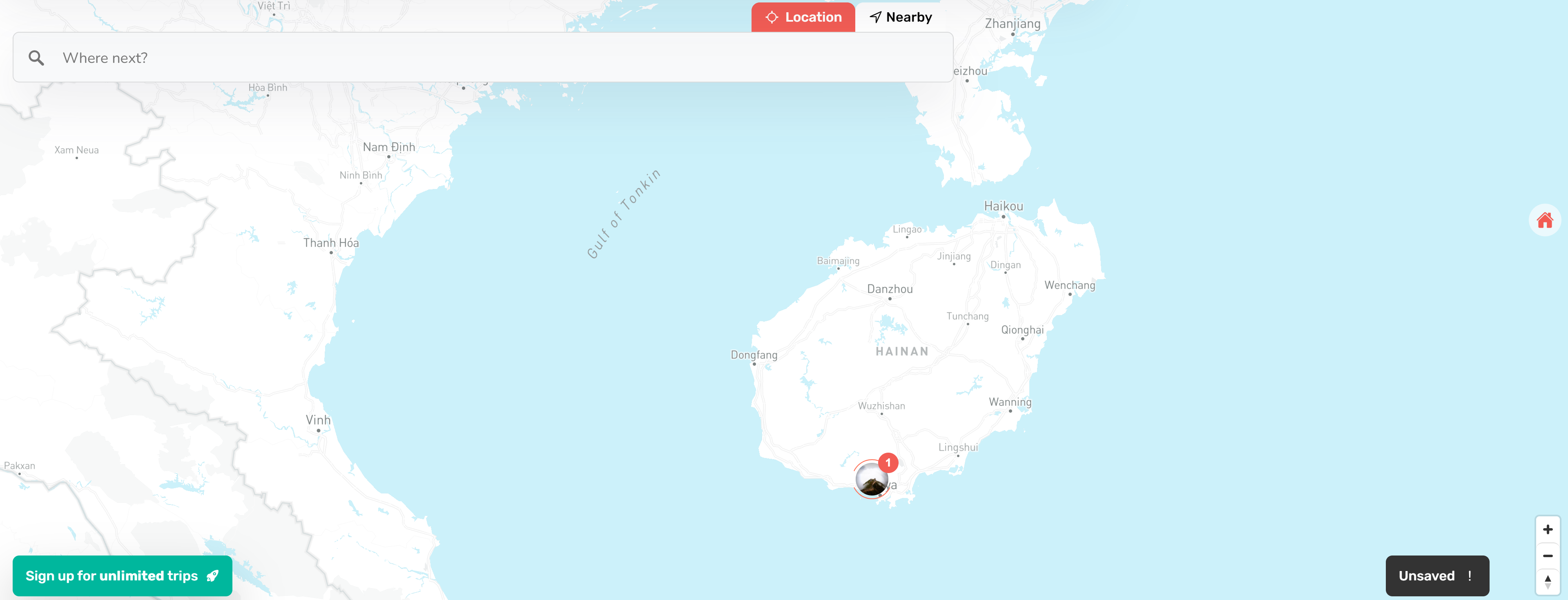
Where to stay:
In the beginning of the 21st century China began investing into the potential of international tourism within Sanya. Since then, countless 5-star hotels have sprouted in the region. Whilst usually I’m someone who enjoys a backpacker hostel or an affordable Airbnb I thought I’d see what all the fuss was about.

I was fortunate enough to split the costs with my travel companion and stay in a handful of luxury hotels across Sanya. Combined with my own experiences, I spoke with a few other travellers too about their favourites and the new kid on the block stood out well. 1 Hotel Haitang Bay Sanya, it’s a little pricey but if you use Feizhu App mentioned above you can enjoy a great discount. The hotel stands tall as one of China’s first fully recycled 5-star hotels, with all non-recycled materials being locally sourced to reduce the carbon footprint.

The hotel has a 25-meter swimming pool suspended in mid-air accessible only to adults via their room cards, inside the pool area you’ll find sunbeds as well as a few inflatables to have fun with. Not to mention you can actually take photos from under the pool just like I had done below.
What to do?

Below the swimming pool there is a great venue which in the evening looks like a dancefloor. You can see the decent towards it in the image below.
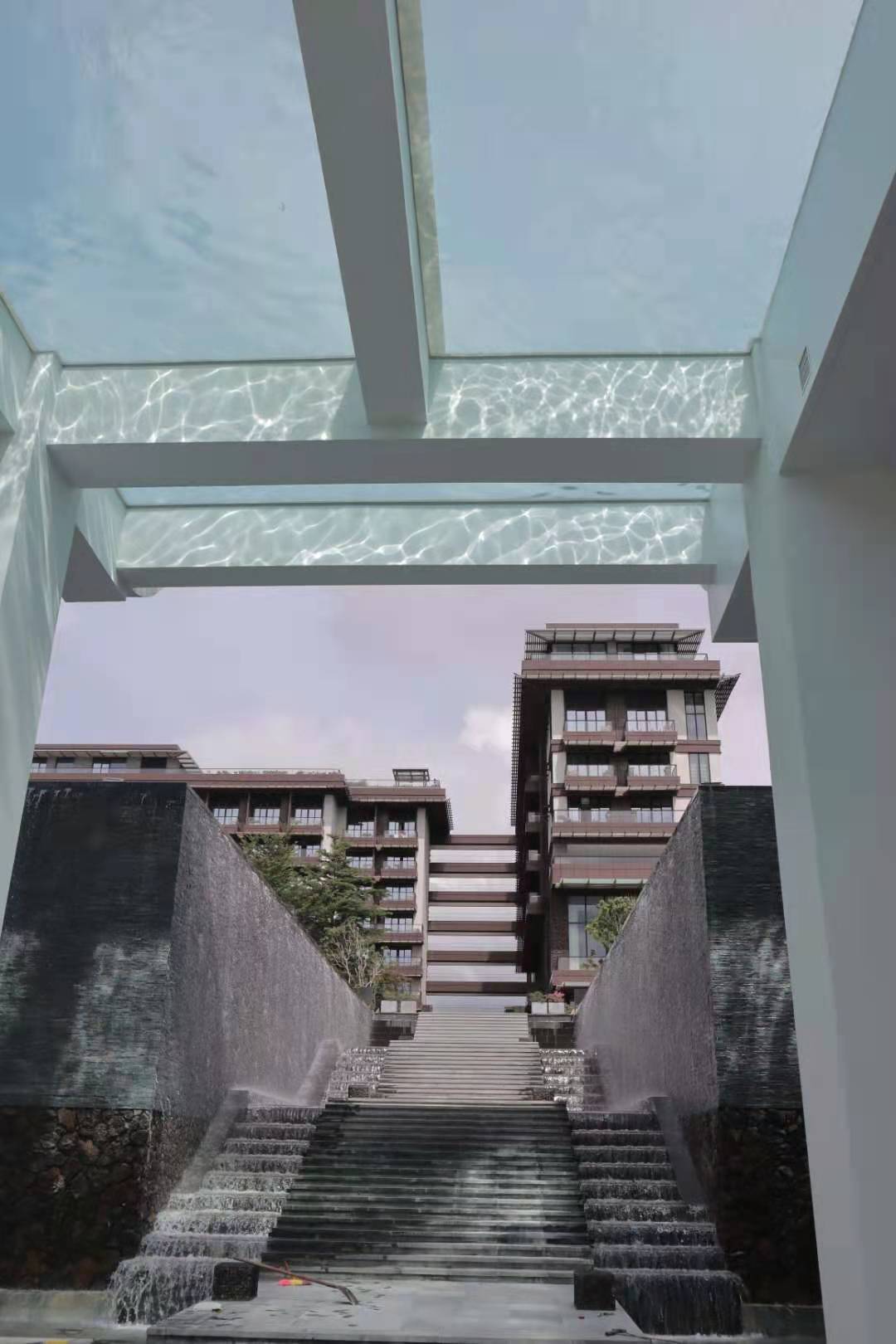
The all you can eat buffet breakfast here was by far the best, from an assortment of ready blended super fruit smoothies to sirloin steak cooked to your liking in the BBQ section. Unfortunately, I was too shocked at the quality of the breakfast and only managed to capture the dinner. Here are a few of the plates I took down (and yes, I do indeed need to work on my fine dining photography ha-ha).

The facilities around the hotel make you feel as though you’re in a forest, with the reception suspended by a few huge wooden beams and air conditioning circulating automatic woody oils. Neighbouring this and pictured below is waiting room which has a warm feel due to its birch trees sprouting through pockets of local pebbles and into spotlights in the ceiling above.

The hotel has various cafes and restaurants of which you can relax inside throughout the day.

Of course, it’s important to mention the rooftop bar pictured below.
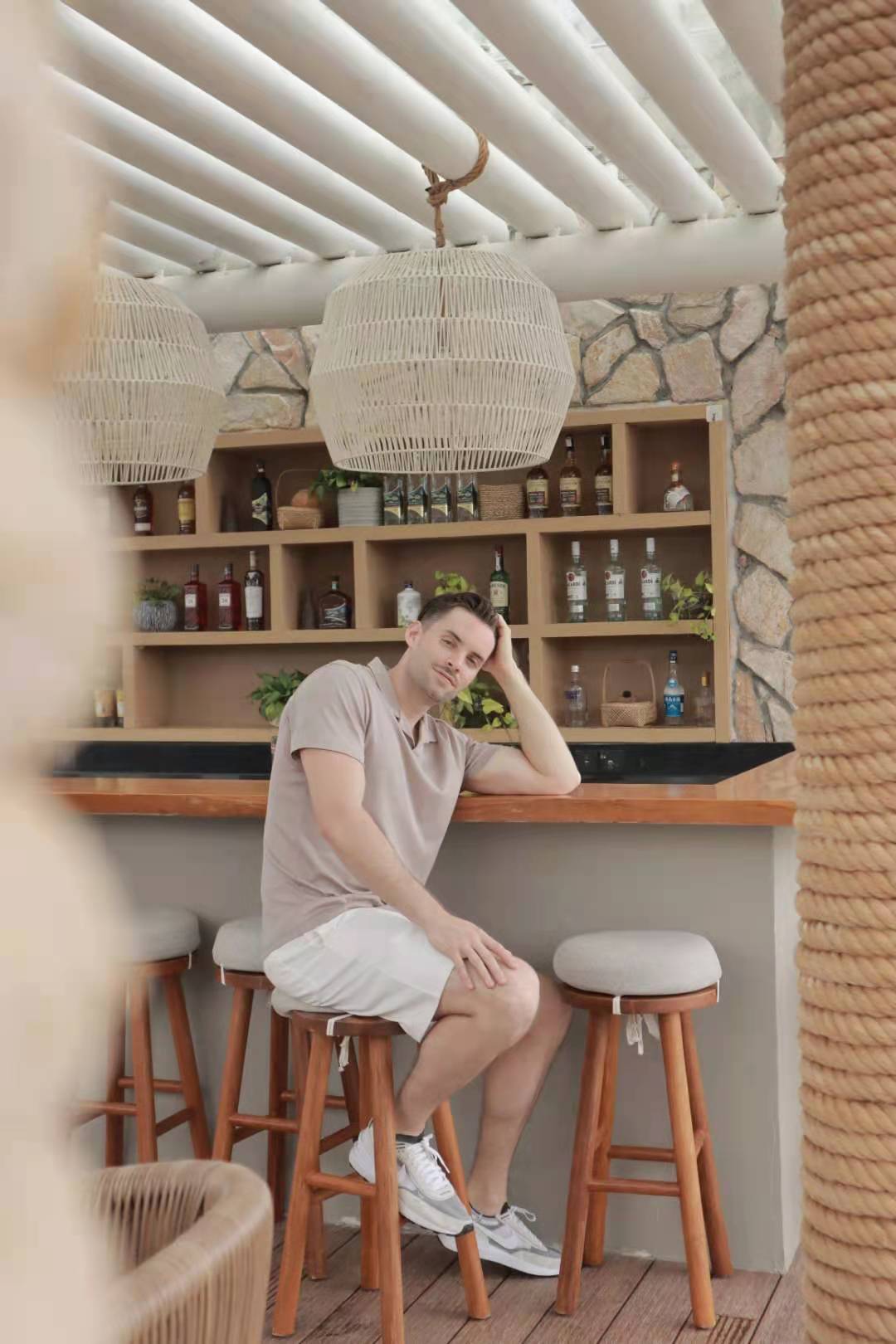
Local life comparison to London and Shanghai:
Must see areas in Sanya expand across each and everyone of it’s beautiful beaches. If you explore them early enough you’ll get a touch of local life too. On one morning I woke up early run down the local beach before 6am, on that day I met a group of locals pulling in seafood to sell to the local hotels. This area also contains the highest density of centurions across all of China, making it China’s very own blue zone. Thus this hardworking socially connected lifestyle might be their local secret to longevity. Naturally I joined in to help them pull in the haul. You can find that video via “Sanya” on my Instagram moments here

Even though this island is dubbed the Hawaii of China it still leaves me feeling as though it is lesser explored by internationals than associated Asian tropical cities in the region. I truly enjoyed this break and I would recommend it to anyone who is looking to plan a 7 day+ holiday in the region. It’s hard to compare this to London and Shanghai as its a city which feels much more tropical opposed to built up. If I was to compare it to other tropical cities which are more similar, Hong Kong comes to mind, it looks just like a Hong Kong Island I wrote about here

Da Nang, Vietnam
Our next destination is halfway down the coast of Vietnam, known for its white sand beaches and turquoise waters.
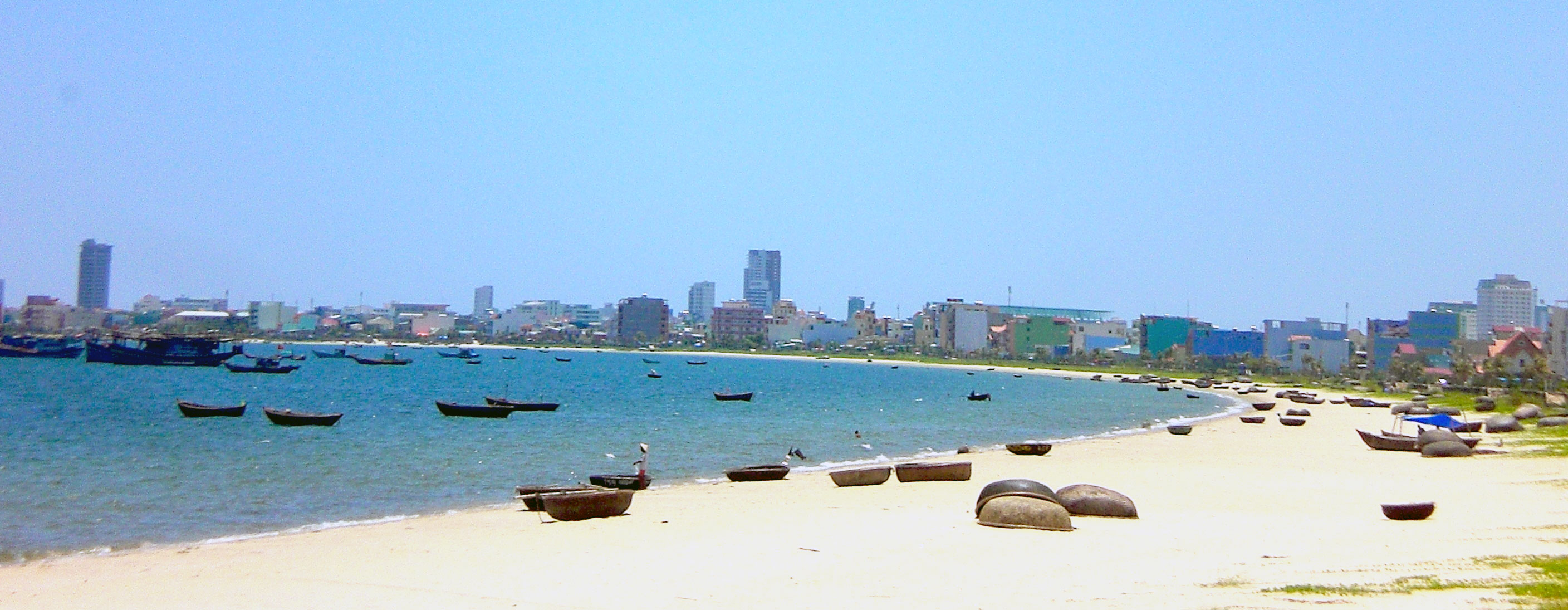
You can see below it’s half way down the coast surrounded by other popular destinations.

Da Nang is home to 1.1 million people spread across 1.200km. Da Nang has a pre-covid annual travel growth rate of around 17%, about a 3% higher yearly growth than that of surrounding regions. Things really took off in 2015 for Da Nang when they saw a 26% increase in tourism compared to 2014; opposed to the 7% average growth rate over the 4 years prior.
Da Nang is a city stop along a popular shoestring tour from north to south Vietnam. That’s how I found it when I was fresh out of college and planning my gap year before University in 2014. You can see it was my 5th destination along my adventure through Vietnam below.
This is a popular route done by travellers and I’d recommend doing it on the back of a motorbike if you take the correct safety precautions. I was only 18/19 when I went on this trip, and I had no experience riding a motorbike other than the lesson the mechanic in north Vietnam gave me. Thus myself and my travel companion at the time split our journey across various sleeper bus, trains and tuk-tuks. If you’d like to see more on my experience, I made a full video of my experience. Da Nang’s time stamp is from 4:27-5:30 here
Where to stay:
This region is particularly famous for its beautiful beach, so you want to be as close to the beach as possible. I’d recommend staying in the Sunflower Hotel. Since I took the photo they’ve rebuilt but the location is still the same! Throwback to 2014!

It’s 350 meters away from the beach and 2km from the city centre! Great stay!
What to do:
It’s not just the tropical beaches which make this area so great. The locals here have a secret in retaining their youth. Da Nang is home to the Galina Mud Bath and Spa, located on Vo Nguyen Giap Street. You can see my experience of it in the video time stamped between 4:58-5:08 here. It’s hot mineral mud baths are naturally and locally sourced and make a great way to relax away from the busy backpacker lifestyles most travellers through this region experience.
Local life comparison to London and Shanghai:
As mentioned above, you can see the region has experienced a boom in travel popularity over recent years. Therefore, locals in this region have all been working hard to facilitate growth and naturally attempt to help themselves and their family become part of this new inflow of money. Comparing the local life to Da Nang is a little tricky as it’s only recently seen such a travel boom. However, when looking to the older generations you do get a taste of the local life slowed down. All along the golden coast of Da Nang you can find multiple outside gyms just like you can in Shanghai, all of which filled with the elderly practicing good life habits. I’d really like to see more facilities like this sprouting in the communities around UK, the lovely souls in our elderly population need more attention.

Penang, Malaysia - Interview with creator of Youtube channel “Hotel Travelmania”
Penang is home to 1.64 million people across 1,048km. It’s certainly not shy to the limelight as it is recognised as the Best Places to travel to (CNN, 2019), One of the Best 15 Cities in the World for Food (CultureTrip, 2016), Among 13 Asia’s Most Picturesque Towns (CNN Travel, 2019) and Among the Best 15 Islands to Retire On (International Living, 2021 ).
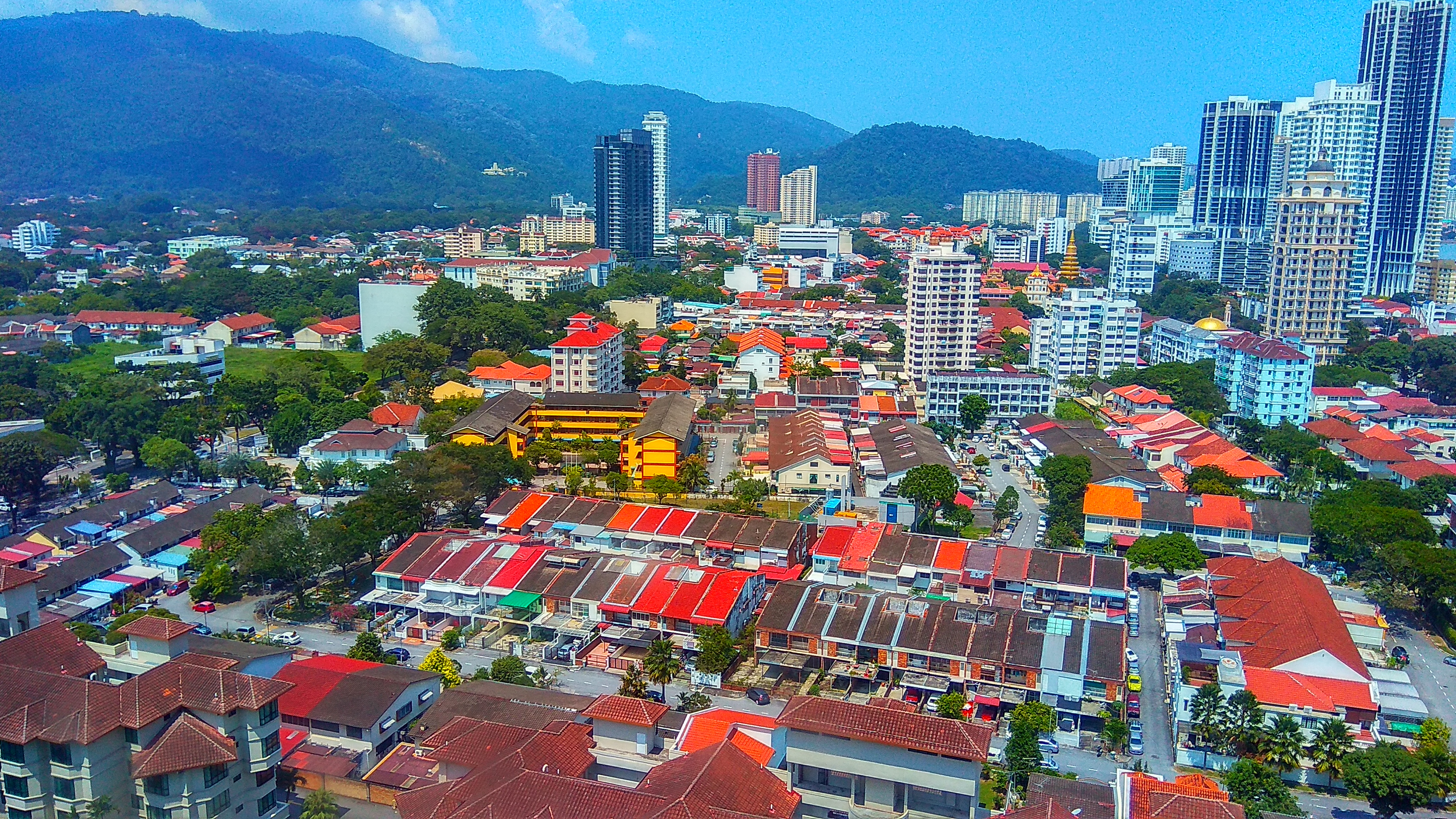

Pre-covid the region saw international arrivals rise to 16.3% year on year. However we feel as though Penang needs more international recognition, 44% of those contributing to the great travel group in Penang come from Singapore alone, 29% coming from Indonesia. Read on to find out why this is so popular below through our interview with local Malaysian travel vlogger Daxter Ooi another fellow Tripapter who is the channel owner of Hotel Travelmania on YouTube!
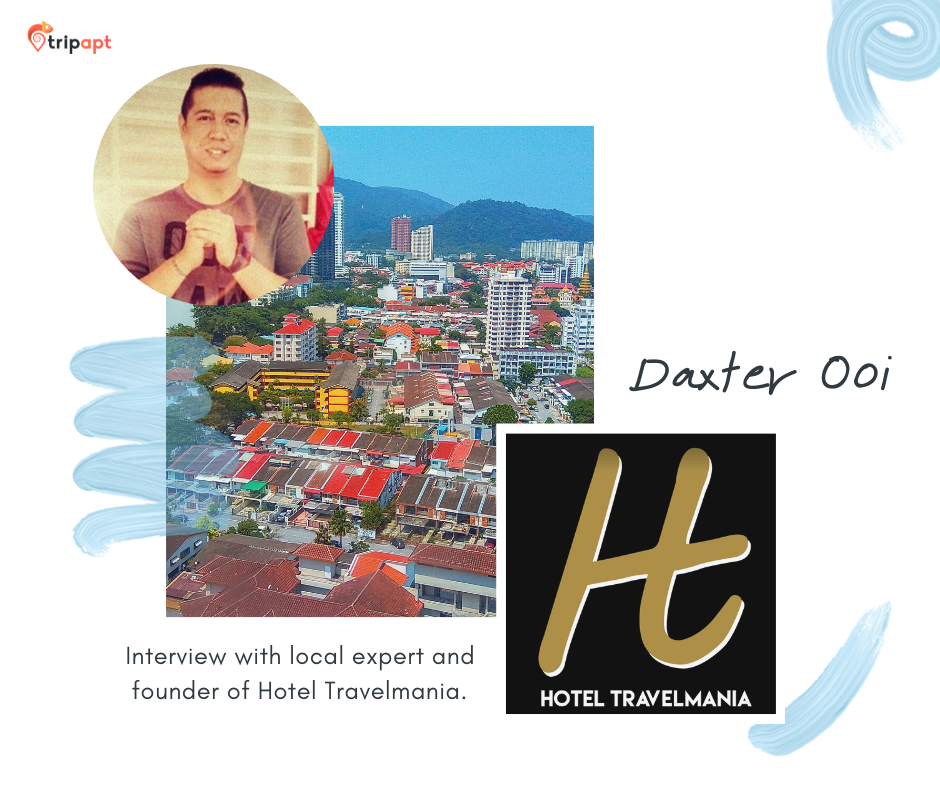
Jon: We see Penang is split across the mainland and an island, is that right?
Daxter: Yes, Penang is made up of Penang Island and it’s mainland, Seberang Perai. However, most hustle and bustle happens on the island itself. The capital of Penang is George Town which is a UNESCO World Heritage Site. You can see those two main destinations on the map below with 1 being the islandic area and 2 being the mainland area.

Jon: What are the most popular places to stay in Penang?
Daxter: Well it depends who you are, for holidaymakers, it would have to be the Batu Ferringhi area which has plenty of beach resorts. Those that prefer staying somewhere with traditional heritage and a vintage feel, hotels in George Town would be the choice.
The most popular hotel in Batu Ferringhi has to be Hard Rock Hotel Penang. However due to such a high demand in the region you have hotels such as Holiday Inn, Park Royal, DoubleTree by Hilton and Shangri-La as well. Not to mention the plenty of Airbnb in the region.
As for heritage hotels in George Town, the most popular would be Eastern & Oriental Hotel. There are others such as Seven Terraces, Cheong Fatt Tze, The Edison, Royal Chulan and Clove Hall.
Of course there are many modern hotels in George Town itself such as The Wembley St. Giles, JEN by Shangri-La and The Prestige Hotel.

Jon: What is your opinion of the best place to stay in Penang and how long do you recommend staying there?
Daxter: Penang is famous for its amazing food so I’d always opt to living around George town due to the surrounding streets food options. However sometimes I’m looking for a break from busy lifestyle in Kuala Lumpur so I’ll head towards the Batu Ferringhi area. I usually stay a couple of days in George town and spend my last 1 or 2 days in Batu Ferringhi before heading back on a 5 hour drive to Kuala Lumpur.
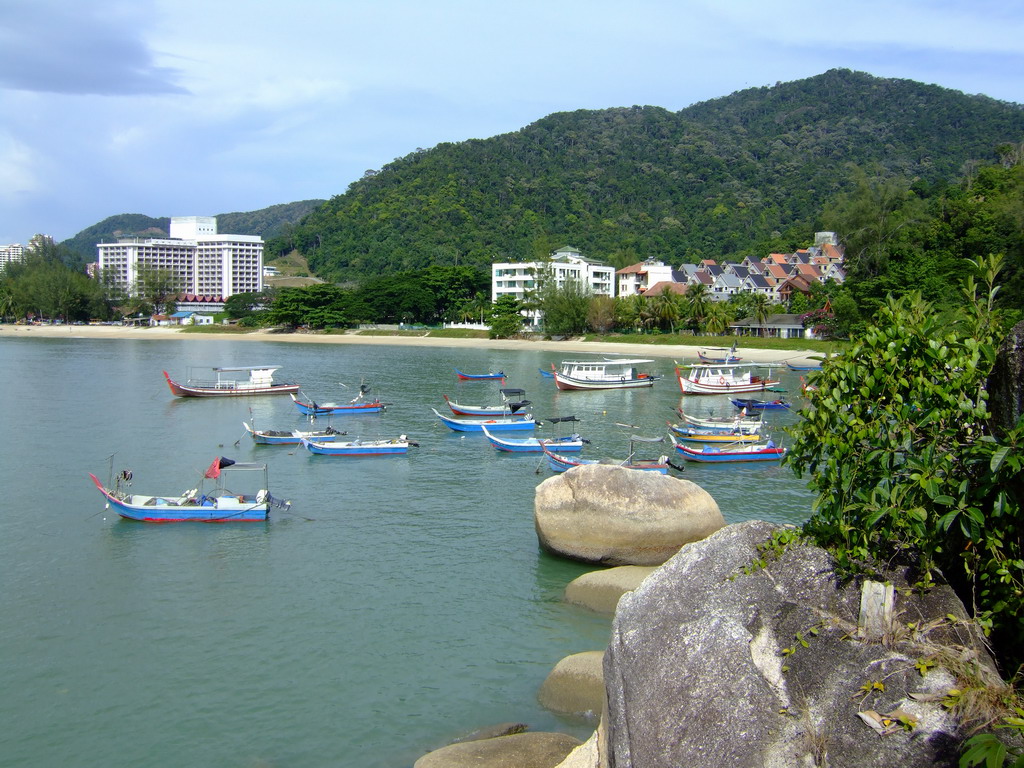
Jon: If your planning on moving to the area, what would be the best residential area?
Daxter: As for a local staying in Penang, I would recommend Tanjung Tokong. Located in between Batu Ferringhi and George Town, Tanjung Tokong has everything from upscale development, nature and it’s close to the beach.
Jon: We talked about your work in Kuala Lumpur a little, but what about those who work in Penang, what is it like to work there?
Daxter: Well, most businesses are located nearby George Town Central Business District. But most Penang industrial zones are actually located on the mainland. Many Penangites travel within island and mainland and vice versa for work. After work, locals keep active as their are many fun things to do, such as walking by the beach or taking a hike. The most famous is probably taking a stroll in Penang Botanical Garden. Then you can hike the famous Bukit Bendera (Penang Hill) or hike/cycle up Carpet Hill. Some may go to Esen Hill to hike and explore the hidden gem, Esen Beach. You can also try out the ATV activity there. Apart from those places, one of Penang’s latest attraction is the ESCAPE Penang. It is theme park with lots of fun and games in a natural environment. It has the longest tube water slide in the world. If you’re into overnight camping, you can do it here.
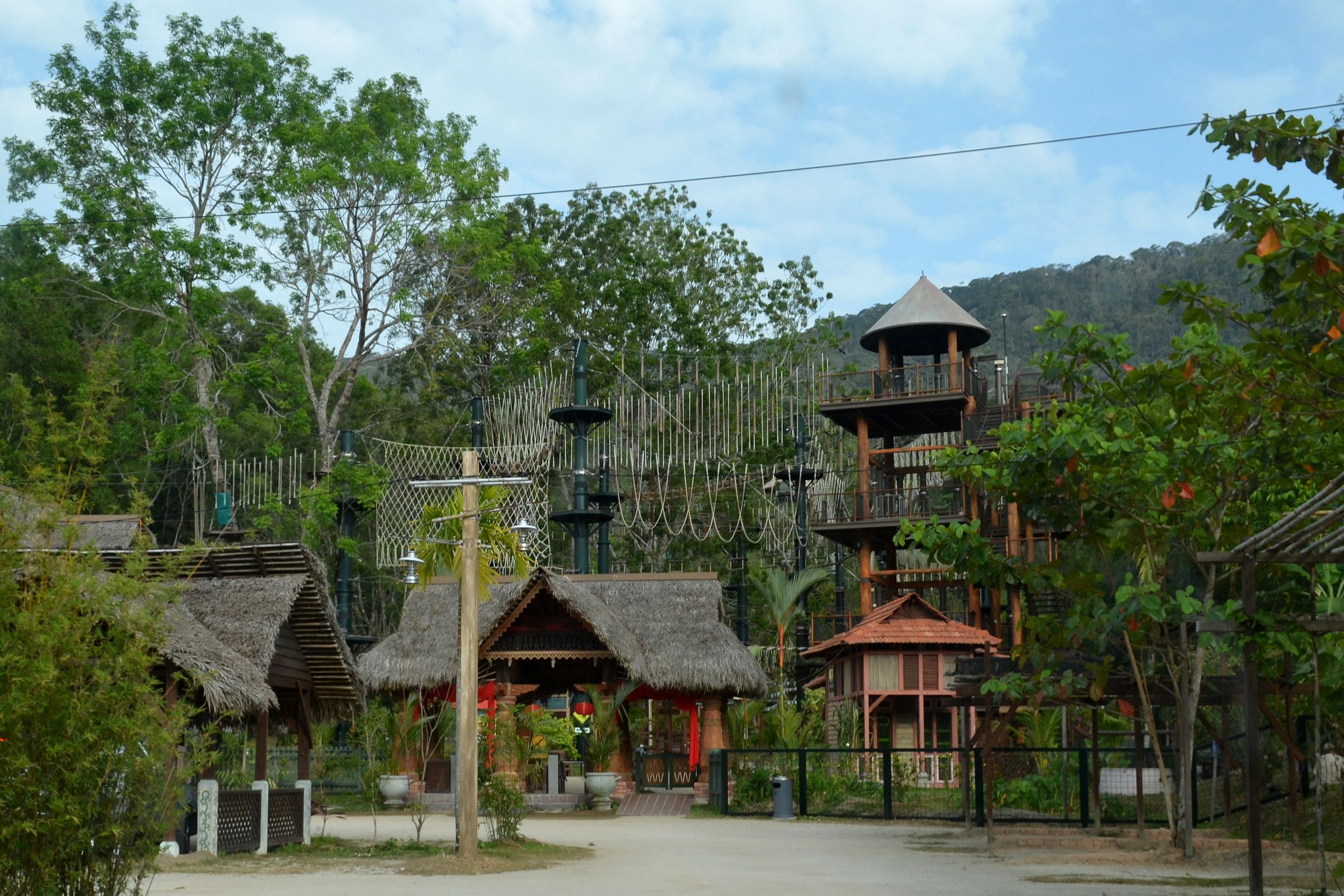
Quick thankyou to Daxter for his time in this interview and if you’d like to learn more from him be sure to check out his channel on YouTube here
Okinawa, Japan - Interview with creator of travel blog “The World Overload”.
With 1.4 million inhabitants across 2.200km2 it’s population density is on the light side compared to the destinations mentioned above. Perhaps this is because Okiwana is spread across 150 islands, 400 miles off the coast of mainland Japan.

Once named the land of the immortals, Okiwana is internationally recognised as a blue zone (a higher-than-normal density of the population live beyond 100 years of age). Particularly amongst the female population, the centurions in Okinawa live longer than anyone on the planet. Perhaps this is due to the locals powerful social network groups locally called “moai” (Moai (/mo,eye/, meaning a group of lifetime friends). In order to unveil a little more about the island I interviewed a fellow Tripapter and founder of www.theworldoverload.com.

Jon: As travellers, we’re always looking for ways to assimilate with locals. Can you think of any good opportunities which helped you make more local friends in Okinawa?
Nicholas: Yes, well since you live in Shanghai your probably familiar with the dragon boat festival right? Well in Okinawa it pulls in a lot of attention! Festivals like this are a great way to assimilate. Any local or fellow traveller can sign up to participate in the festival. As long as they are willing to meet up for practice of course. The pictures below are from the main event which is held in early May every year.

Each dragon boat has it’s own local team for competition. Multiple regions will sponsor dragon boat racing both professionally and for amateur competition. If any of your readers would like to find out more about how to get involved, contact me and I’d be happy to help!
Jon: Yes you are right, I’ve done a lot of dragon boating myself over in Shanghai, but are there any other sporting events unique to Okinawa?
Nicholas: Well yes of course, there is a major three-day event held on the second weekend of October every year in the middle of the Okinawa capital Naha. It’s called “The Great Tug-of-war", where tens of thousands of people gather to pull this 43 ton 200-m rope! It’s made possible by 280 smaller ropes allowing the people to tug. At the end of the festival pieces are cut off and handed to people to take home for good luck! If you’d like to get involved check out the registration website http://www.naha-otsunahiki.org/ to get the most up to date information.

If you’d like to read another account from Nicholas on his experiences within Okinawa, read on here
That concludes our top 5 underrated coastal cities in Asia, i hope you enjoyed the read and be sure to subscribe for more original travel content just like this.






Responses